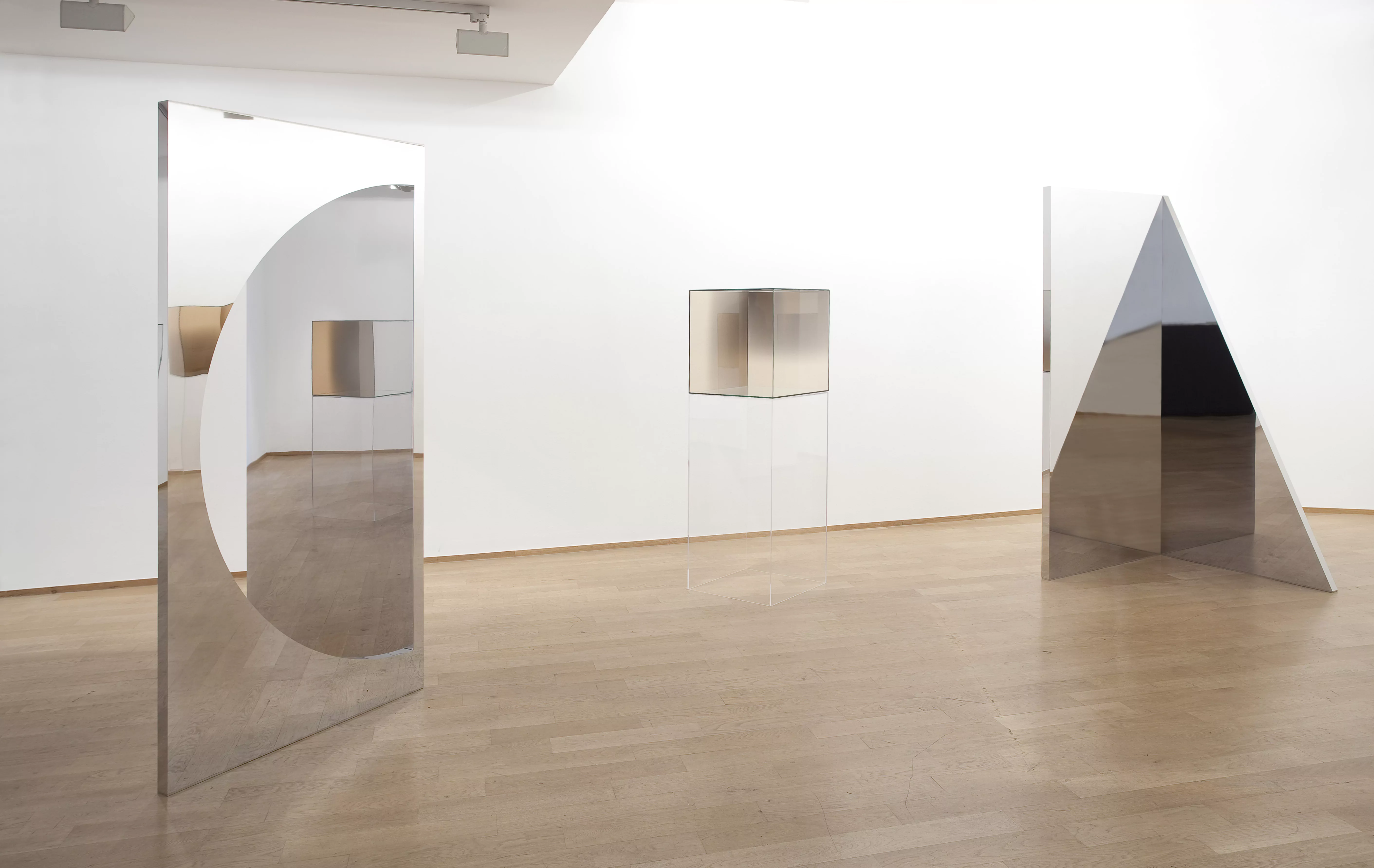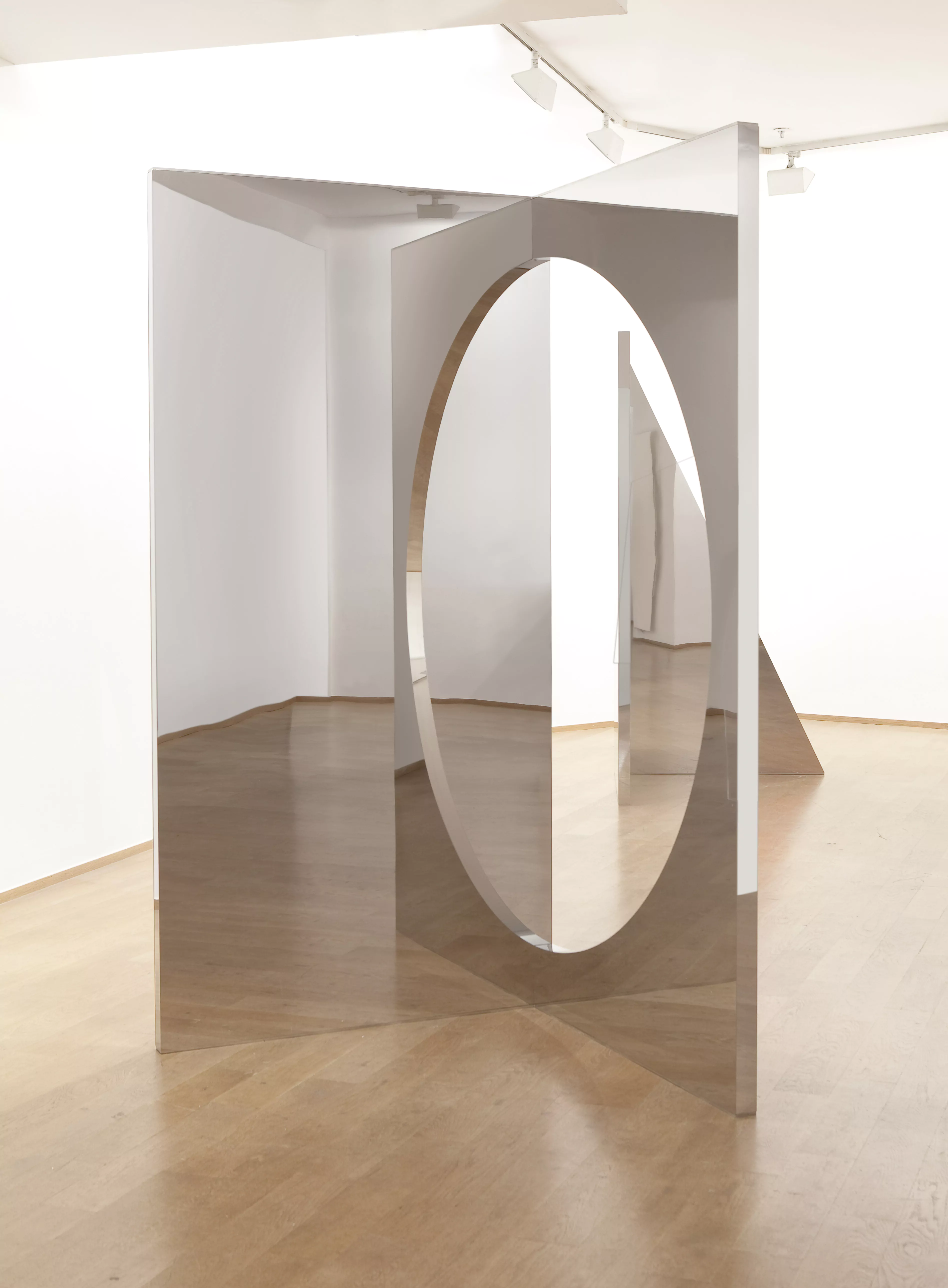
Group show
Jeppe Hein & Larry Bell
For his first exhibition at Galerie Templon, the young Danish artist Jeppe Hein has chosen to invite master Californian minimalist Larry Bell to join him for a dialogue exhibition that examines their respective artistic approaches.
Now aged over seventy, Larry Bell is, with contemporaries such as Donald Judd, Sol Lewitt or Dan Flavin, recognized as one of the key figures of American minimalism. His works explore light and perception. He made his reputation with sculptures whose geometry and subtly iridescent surfaces question our relationship to space. Fascinated by the structure of the cube, and working mostly in glass, he creates objects of unsettling ambiguity: transparent yet opaque, posing both as volume and surface, his cubes dissolve the boundaries between painting and sculpture.
Jeppe Hein belongs to a younger generation of artists who have incorporated the minimalist codes in order to better subvert them. His installations and spare geometric objects use minimalist language to propose interactive mechanisms. His work combines a mediation on architecture, the “relational aesthetic”, with reflections on “the environment” in a broader sense. For this exhibition, Jeppe Hein takes a series of Larry Bell’s cubes as his starting point which stand in counterpoint to his own recent works, playful and provocative, inviting the viewer to get involved and communicate with the sculptures.
For Hein, this is more than simply paying homage to a historic artist whose work he has long admired. This “conversational” exhibition, acting as a “counterpoint”, seeks to foster a debate about the relationship between a work and the space showing it, about intergenerational interactions and the different perceptions that art demands.

Les artistes
Born in 1939 in Chicago, Larry Bell lives and works in Taos, New Mexico, and Los Angeles. A pioneer of Californian minimalism, he uses the cube as the keystone of his work. The surface of the glass cubes that brought him fame are treated using a technique called thin-film deposition of metallic particles. His works explore the notion of perception and the secret relationships between corners, space and infinity.
